Subscriber Benefit
As a subscriber you can listen to articles at work, in the car, or while you work out. Subscribe NowOver the past three years, a little-known real estate broker has quietly acquired more than 300 acres of property on the west side. He’s invested tens of millions of dollars in underused strip centers, commercial buildings and vacant land as part of a grand vision for the International Marketplace neighborhood.
On Nov. 10, that vision took a major leap forward, as Fabio de la Cruz announced an audacious plan for a transformation of Lafayette Square Mall and several adjacent properties into a multicultural hub featuring a concert center, movie theater, hotel, multifamily housing and a redefined shopping village.
The Argentian-born de la Cruz, 50, is calling the development Window to the World.
“The mall as we know it is no longer viable,” he said during the announcement. “You have to rethink the concept of a mall; I see this less as a mall than as a neighborhood.”
De la Cruz said he plans to spend $200 million to complete the first phase of the multi-faceted project, leaning heavily on capital already in hand and on a small group of select investors in his company, Sojos Capital LLC. He also told IBJ he has a Wall Street investor—someone he wouldn’t name—lined up for the project.
Still, Window to the World would be by far the biggest project to date for de la Cruz, who has until now focused on smaller commercial properties.
Because his work has occurred largely in the economically depressed area near Lafayette Square, he and his companies have largely flown under the radar of other developers. In fact, they did business under different names until recently.
Sojos Capital operated as Perez Realty Group LLC until this May, when de la Cruz changed the company’s name as he started making concrete moves toward the Lafayette Square redevelopment.
That’s also when he began using the name Fabio de la Cruz. He said he stopped using his given name (which IBJ has researched but decided not to publish at this time) as publicity of his projects mounted. He said he fears stories about his wealth would make him and his family kidnapping targets when they travel back to Argentina and Colombia, where his wife is from.
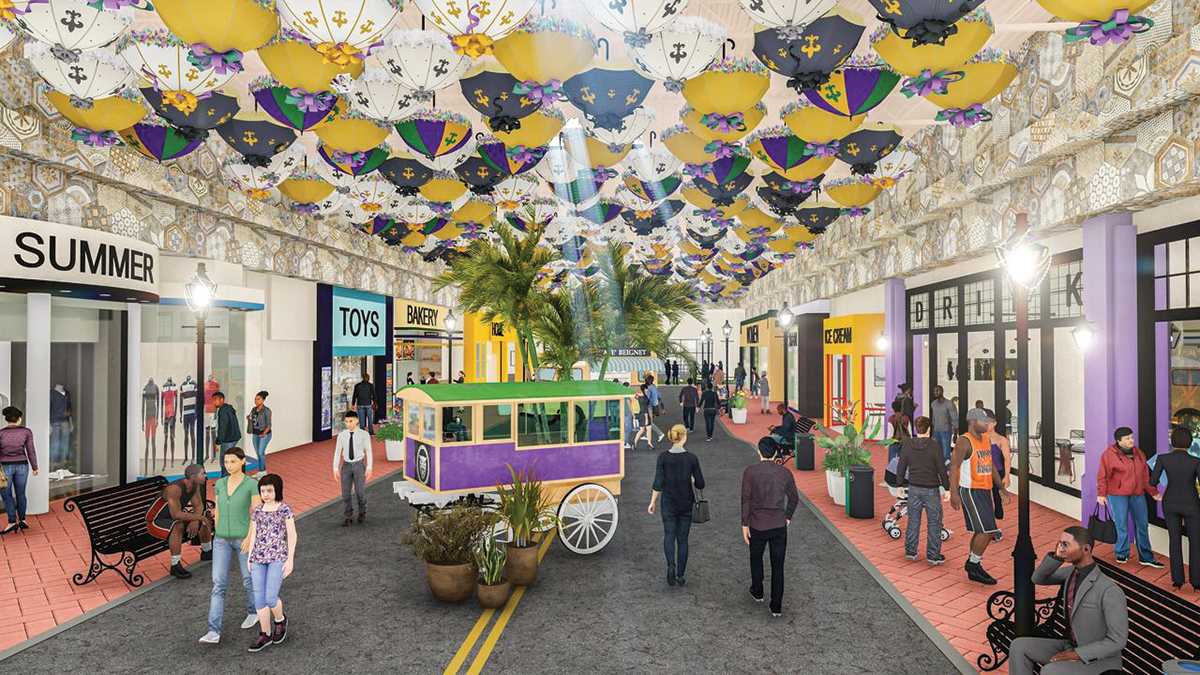
The vision
De la Cruz’s full vision includes more than 20 components—on the mall property and beyond. He said he is “ready to spend lots of money” to revitalize the neighborhood. But in the shorter term, over the next two years, plans call for:
◗ ground-up construction of about 200 multifamily rental units.
◗ renovation of one former anchor store into a boutique hotel, another into innovative office space and a third into a multi-functional event space.
◗ renovation and leasing of outparcel buildings for businesses such as veterinarians’ offices and pet boarding, bicycle sales and rentals, and a coffee shop.
◗ construction of a public trail and park.
◗ infrastructure improvements.
The proposal also includes construction of an indoor soccer venue, sports academy and dance studio; an international concert center; a trampoline park; a charter school; renovations and reopening a movie theater; and construction of a new IMPD Northwest District Headquarters at 4005 Office Plaza Blvd. De la Cruz expects to complete most of those projects by the end of 2023.
If successful, the redevelopment would reclaim prestige for a mall that opened in 1968 and was once a top shopping destination.
In the 1970s, the mall featured six department stores: Sears, J.C. Penney, G.C. Murphy, William H. Block, Lazarus and L.S. Ayres. Today, its only anchor is the discount retailer Shoppers World, after Burlington Coat Factory closed its store there in September 2019.

Smaller spaces are mostly occupied by a mix of local stores and restaurants, with only a handful of national chains. J.C. Penney, Sears and Macy’s left in 2005, 2008 and 2009, respectively.
Gordon Hendry, a commercial broker with HRE Advisors, said the project could give the neighborhood a major boost—if it’s done right. He said he’s optimistic, but cautious.
“It’s certainly ambitious, but a lot of projects are done in phases,” Hendry said. “We’ll see if there is some early success and if that is able to generate some momentum. This doesn’t sound crazy on its face, you know, and it’s not necessarily something that you look at and say, ‘This is impossible.’”
“Of course, experience, funding and execution will prove whether they can be successful or not,” he said.
De la Cruz said he feels confident, so he’s spending little time or money bringing development partners into the project. He said that leaves him free to pursue his own unbridled concept.
“There is nothing more real than having the cash in the bank,” he said. “The money’s in the bank; the properties are all paid in cash. That’s why there is no reason it’s not going to happen. We have the cash and I have 100% [control] on making all the decisions.”
‘Cares about what’s right’
De la Cruz arrived in Indianapolis in 2001, where he took a job as a dishwasher and busboy at a since-closed Don Pablo’s on the north side. He became a loan officer for American Saving Mortgage in 2002 and was there two years before he was hired as a residential real estate agent at Century 21’s Keystone Crossing office.

Tim O’Connor, de la Cruz’s boss at Century 21, said the young broker came aboard with high ambition and a desire to build up his own business.
“The man is very intelligent and caught on very quickly,” O’Connor said. “He came to the real estate business with broken English and learned [the language better] by watching TV and reading books.”
De la Cruz was named rookie of the year at Century 21, with the most closed transactions of any broker in the 200-plus agent firm. He also began hosting a real estate show on Radio Latina, an Indianapolis FM channel, focused on property investment.
“He’s constantly thinking, ‘Where’s the next place that I’m going?’ And he just kept moving up the ladder,” O’Connor said. “He got into doing commercial real estate and did the same thing, buying and selling along with some property management. He’s very good at networking with people.

“That’s the way that he’s accomplished big projects, including with Lafayette Square—from networking.”
One of the people de la Cruz networked with early on was Mary Clark, executive director of the International Marketplace Coalition, which promotes businesses in the Lafayette Square neighborhood.
“He’s always been a person that cares about what’s right and what’s best for the community,” Clark told IBJ. “The first time that I met him and reached out to him, wanting him to participate in some work that we were doing, without hesitation, he immediately said yes.”
She said de la Cruz’s investments in the neighborhood have been well-received by business owners, especially those who are tenants in his properties.
A series of purchases
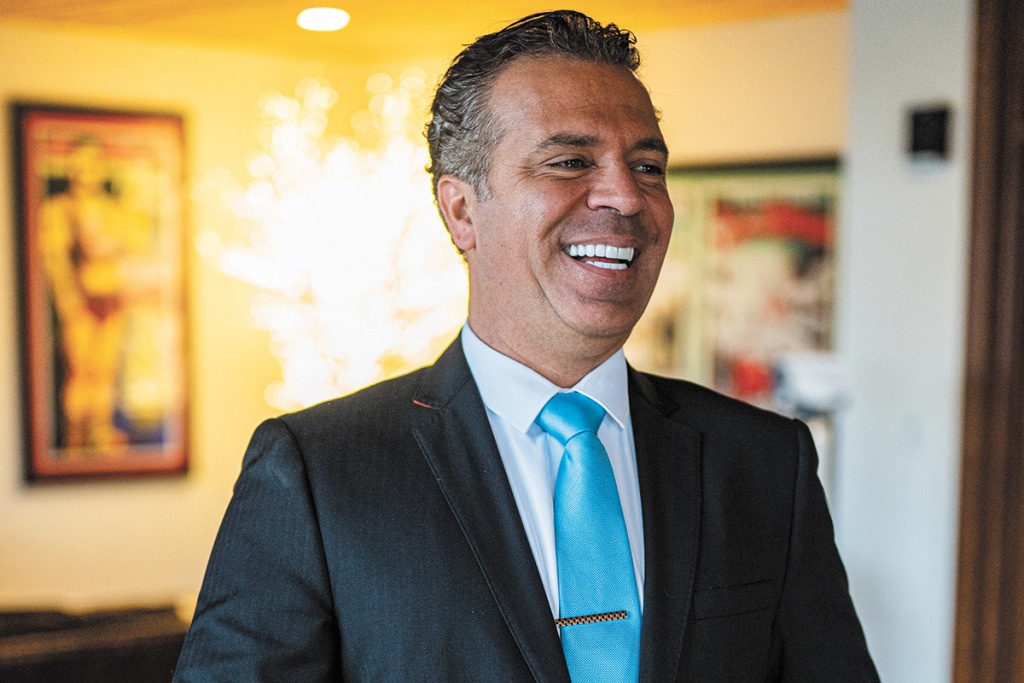
In November 2020, he acquired the Lafayette Place shopping center for $4.25 million, followed by Pike Plaza ($5.5 million) and Lafayette Square Mall ($26.7 million) in December.
Each of those properties has already seen or will soon see significant investment, including the mall, which is set to have its roof replaced and recently had its parking lot repaved.
Other sites have had façade improvements and other smaller-scale upgrades to add curb appeal and improve functionality for tenants and patrons.
Since 2019, de la Cruz has spent nearly $80 million to buy 320 acres—most of it commercial property near West 38th Street and Lafayette Road. One-third of that land, about 113 acres comprising 1.2 million square feet of retail space, is the Lafayette Square mall property.
IBJ found public records that indicate de la Cruz owns nearly 50 properties in Indianapolis—mostly shopping centers, car dealerships or vacant land—under several limited-liability corporations. Most acquisitions have been through Perez Investments Fund LLC or PFFO QOZB LLC.
The holdings also include several single-family houses across the city.
De la Cruz said he doesn’t carry much debt, despite the large number of purchases. “All the properties that are in the neighborhood are paid in cash,” he said. “We don’t have any financing—I don’t believe in financing. I have a couple of properties that I still am paying off some debt on, but it’s a small bit [compared to] the whole project.”
A search of Marion County property records confirmed that de la Cruz appears to have no active mortgages on major properties.
“He’s already invested immensely in this area, so he’s not just talking—he’s putting his money where his mouth is,” Clark said. “And he’s listening to us.”
A long-term view
De la Cruz has said he doesn’t plan to sell the properties in the Lafayette Square area during his lifetime. Instead, he wants to hold them as investments in the neighborhood.
“I like to do these things in a different way,” he said. “I’m a long-term investor, and when I say ‘long,’ I mean I won’t sell anything until I die.”
De la Cruz said he doesn’t anticipate buying much additional property because he already has what he needs for his project. But he added he’s open to working with other developers who want to spend money in the neighborhood on their own.
“I’ll embrace them in any way and shape that I can,” he said. “What I took is big enough and what I know that I can do myself. … I don’t have the manpower to manage more than I’m managing now. I know what I can do with the team that I have, and how much I can grow my team to get it there.”
O’Connor said the fact that de la Cruz wants to retain ownership of his property once his project is complete speaks volumes about the developer’s commitment, even if a safer route might include involving firms that specialize in sectors like multifamily or retail entertainment.
“It’s going to be a big challenge, there’s no question about that,” O’Connor said. “But the fact that his vision is to develop and hold onto it instead of—like most people—develop it and sell it or bring other people in to do it … that’s important.
“There’s no question a safer way to do this investment would be to bring in other people and let them own different things. It’s just not the way that that he operates. He has an awful lot of confidence in what he can do. And, you know, so far he has been able to produce what he says he’s going to do.”
Could be risky
Other experts also say de la Cruz is taking a risk by essentially going it alone on the Lafayette Square endeavor, especially because he’s never taken on a project of such a grandiose scale.
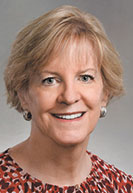
“Certainly, the two things that help ensure sustainable and successful developments are development expertise and financial capability,” said Abbe Hohmann, president and owner of Site Strategies Advisory LLC, an Indianapolis-based real estate consultancy.
“That’s not to say somebody can’t be successful with their first project, but this looks to be a very big development. It could be a cool opportunity for the city, but because of the size, it merits a lot of evaluation.”
Clark said that, while de la Cruz is largely known only to west-side residents because of his work there—International Marketplace is one area he focused on when he was a residential broker—she’s comfortable with the work he’s done and the investments he has promised.
“He is not a person that tries to make himself known. He’s someone that just does the work,” she said.
Clark added that she’s glad de la Cruz is pursuing the development on his own, rather than bringing in national or regional partners, because he’s trying to take residents and others into account, where a national firm might focus on numbers and market research.
“He’s listening to the community. He could’ve come in here and just uprooted all the work that we’ve been trying to do as an organization … but he didn’t,” she said. “He’s constantly having conversations with me and others about the overall vision for the area.”
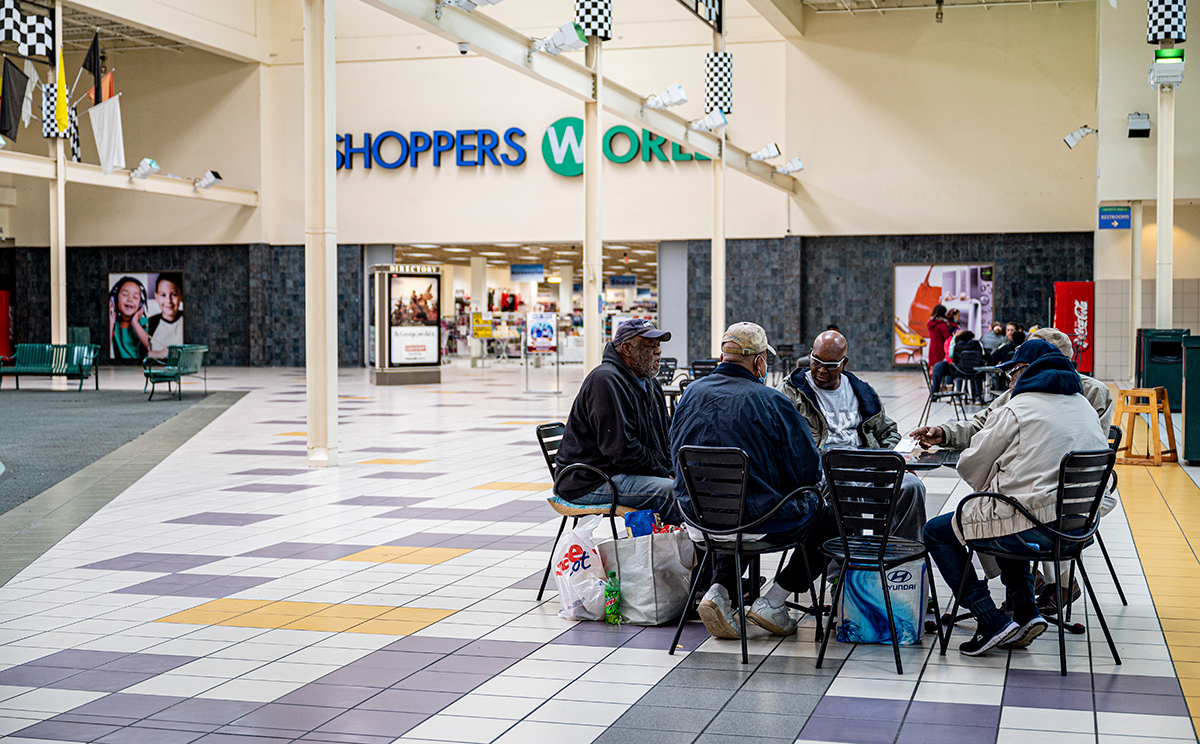
Keeping things together
De la Cruz’s multiple purchases have made him one of the largest property owners in the neighborhood, with control over several of the corridor’s major retail shopping centers.
He said his firm is committed to working with tenants at the mall and other properties that will be affected by the development, to ensure they are able to withstand construction and the likely rent increases stemming from an anticipated bump in demand.
De la Cruz said he values his tenants and wants to ensure they have a home in the new development, but he doesn’t expect them all to make the transition. He said he focuses less on ability to pay full price and more on character.
“This is a big project, but I’ve been doing this kind of process for a long, long time on a small scale,” he said, explaining that some tenants may have one to two years to catch up on rent increases. He also plans to have his development team actively market his tenants’ stores.
“We will try to do our best and use our megaphone to bring them more clients and give them more traffic, where they can catch up,” he said. “There’s some people that won’t make it out—it’s impossible to have a business like this and not leave somebody behind.”
De la Cruz said he had to, over the last few years, rid many properties of tenants who were involved in illicit activity and driving away business for legitimate tenants or making the properties unsafe.
“The bad people are going to be out; the people that aren’t paying are going to be out. But the people that are having good character—they’re going to have a chance,” he said.
Keith Martin is manager of Just Like Sunrise, a restaurant in the Lafayette Square food court. He said he’s excited about the redevelopment and is hopeful his eatery will be among those that can stick around.
“For us, we just go with the flow,” he said. “The owner of the property said he’s willing to [work with us] … . We just hopefully are here to see the completion of the redevelopment of the mall and of the whole area. We just want to be part of it.”
Martin said Sojos seems to have invested more in the property in less than a year of ownership than did its predecessor, New York City-based Ashkenazy Acquisition Corp., over more than a decade of ownership.
“It’s a big difference,” he said. “Hopefully, the business will grow, and we’ll get more people flowing in here just to see what we have to offer.”

State Rep. Cherrish Pryor, D-Indianapolis, who represents the neighborhood in the Indiana House, said she’s eager to see the area redeveloped, and she wants the community and its residents to have an opportunity to offer input.
“We’ve been struggling over this area for years, and I think any one of the major developers has certainly had an opportunity to come forward with a vision for the area,” she said. “It’s really not about how big the company is. It’s about whether or not the company is able to deliver on the development and make it something that the community can be proud of.”
An ask in the works?
Incentives could play a big role in the size and success of the project, with de la Cruz acknowledging he plans to request tax breaks from both the city and state. But he said he hasn’t yet gotten to a point where he’s ready to make such an ask.
In fact, government officials were noticeably absent from the Window to the World announcement on Nov. 8. Industry experts say that’s out of the ordinary for a project of this scale.
De la Cruz said he has had conversations with city and state leaders about support, but nothing is final. He told IBJ he decided to move forward with a project announcement, anyway, because he didn’t want the conversations to leak to the media.
“The project has become so big that it’s really hard” to ask for specific incentives, he said. “We’re waiting to finalize the architect’s plans to be sure that we have a question to ask, but it’s not for the lack of leadership of a local government or a state government. They’re being great there—it’s just that we’re not [ready] to know what we can ask or how they can help us.”
A city official confirmed to IBJ that Sojos has had preliminary, informal conversations with Develop Indy, the Department of Metropolitan Development and the Mayor’s Office about incentives. But Sojos and de la Cruz have not made a formal request nor submitted land-use filings to get things off the ground.
One incentive that could be on the table is a single-site tax-increment-financing district. Such a designation would deploy developer-backed bonds to cover the cost of part of the project—oftentimes, infrastructure or affordable multifamily housing. Those bonds would be repaid using tax dollars generated within the district over a certain period.
De la Cruz said that, while incentives aren’t necessary for him to complete parts of his project, they could help him expand the vision.
“In the end, this is going to happen,” he said. “Now, the size of what is going to happen will depend on those incentives.”
The developer said he is also planning to make use of the project’s location in a federally designated Opportunity Zone. While he does not plan to open an Opportunity Zone fund—which requires filings with the Securities and Exchange Commission—he is looking for ways to make the most of the law that offers substantial tax breaks to those who invest capital gains in a real estate development or business in an Opportunity Zone.
But de la Cruz said: “Money never is the first thing; I don’t think that it’s even the second one. For me, it’s people first. And that’s what drives me to do the things I do: that doing the right thing. … This is a dream that I like to pursue.”•
Please enable JavaScript to view this content.

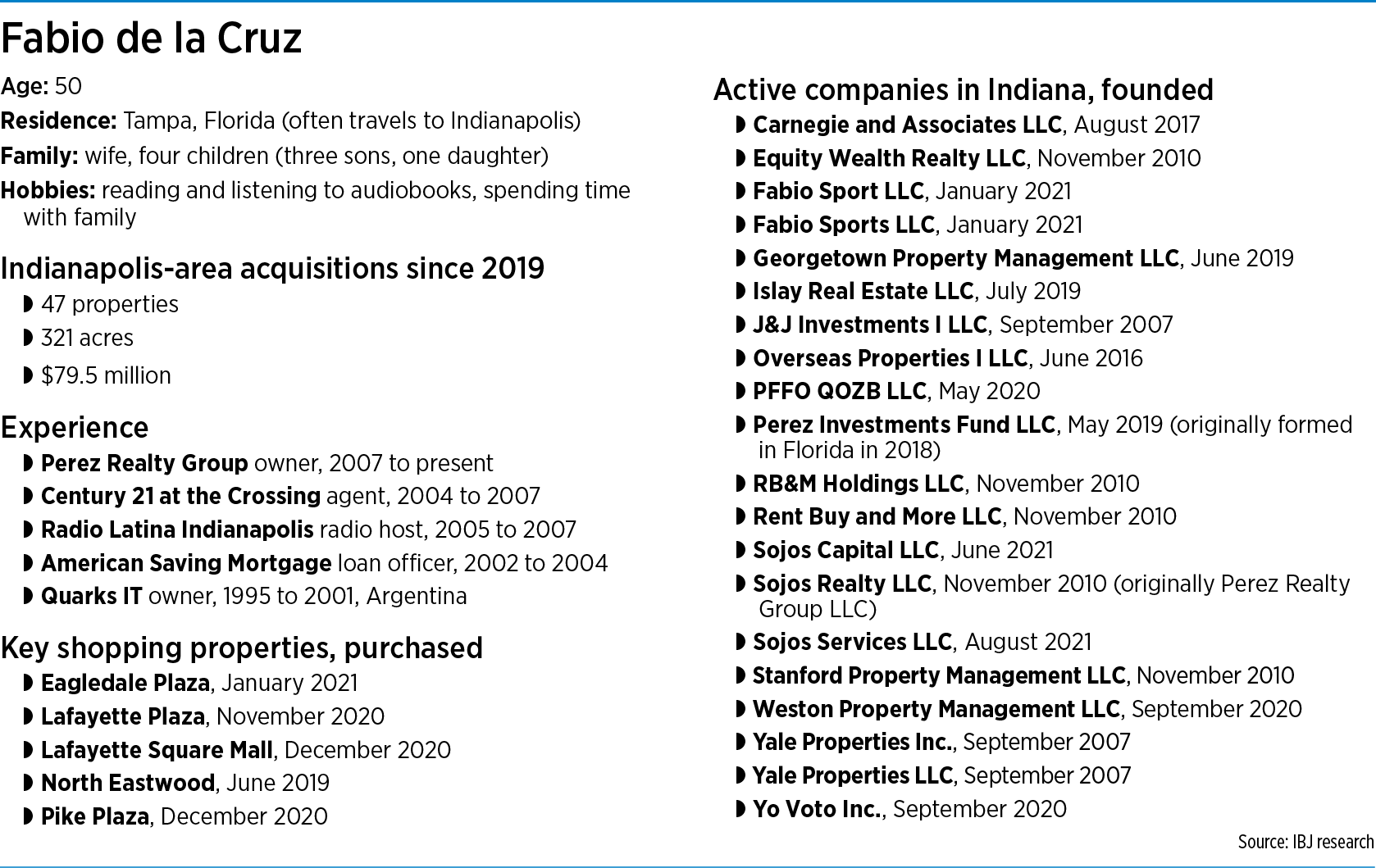
Let’s go!
All great, but “Window to the World” sounds like a 90’s Disneyland ride. That name just has to go.
Thanks for this coverage, and continuing to keep tabs on this development. It matters not just for my Northwest side neighbors and I, but for the city as a whole… given that anyone traveling through our state on I-65 travels right by this land (and currently it’s not an attractive look for Indy). I’m rooting for this redevelopment’s success!
The Opportunity Zone status is key. This would not have happened without it.
The 2017 tax act passed by Republicans and signed by President Trump made development in unfashionable areas feasible.
Mr. De la Curz may be poised to remake Lafayette Square, as the headline puts it, but these plans seem vague and possibly unrealistic. I wonder, for example, how feasible it is to turn a anchor store space into a “boutique hotel” in the shell of a mall long past its prime. And I say this as someone who lives in the area, not as an affluent suburbanite who decries the purportedly high crime rates in the neighborhood.
This plan doesn’t pass the smell test. Reminds me of the plans some other unknow developer had a few years ago for a major sports themed brain injury center at the old airport that quickly unraveled. Hopefully the city of Indianpolis doesn’t start passing out subsidies on this proposed development until progress is actually shown.
I guess its easy to come up with a list of reasons why this feels somewhat dubious, however I’m rooting for them to succeed. That area needs something viable in the LSM location.
It’s great that Lucas Oil Stadium is downtown, but that really would have been a game changer for that whole area had it been located there.
Yeah, it would’ve had more of a negative impact on downtown than any positive impact on Lafayette Square.
As a west-side resident, this is incredibly exciting. The community has the talent and fortitude, through a multitude of family businesses originating from all over the world, to make this area the much-needed international hub of Indianapolis. The current businesses in the area are not reaching their potential because of the Lafayette Square Mall property. I can’t wait to see what he does! I’m hopeful this project will be something Indianapolis, like other major cities who have international neighborhoods, can be proud of in the future.